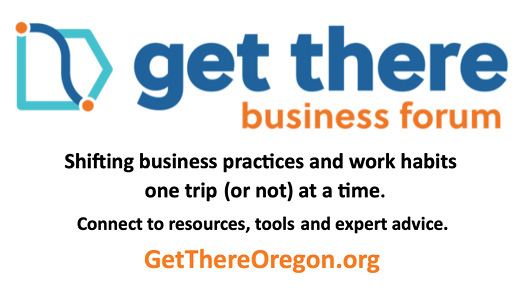Brand Story – Lessons 2020 Taught Us About Remote Work and Rethinking Work
Until 2020, champions of remote work faced an uphill battle. Companies, entire industries, and much of the public sector questioned whether remote work at any scale was worthwhile or even possible. A year ago when offices were suddenly forced to shutter and employees had to work from home, it succeeded with even minimal preparation, busting long-held myths about remote work and illuminating new possibilities for how we work.
The steady growth of remote work over the past decade pales in comparison to the numbers witnessed during the pandemic when as many as 95 percent of U.S. office employees worked from home at least part time, according to Global Workplace Analytics, a consultancy specializing in modernizing workplace strategies. Eighty-two percent wished to continue, indicating a big shift in expectations and norms.

With little foresight, the status quo of workplace practice was turned on its head overnight, begging the question, what took so long? Why are so many in the private and public sectors moving to standardize hybrid remote work, and what’s next?
“Experience over this last 12 months has taught us a lot about remote work productivity and practicality. Many organizational leaders are reinventing the where, when and how of knowledge-based work in ways that are better for operational performance, employees, and society,” said Stephanie Millar, Get There transportation options program manager at the Oregon Department of Transportation.
Added Millar, “Greater remote work adoption means fewer cars on the road and less traffic as does shifting peak commuter travel through flexible work schedules. That’s good for the economy, our quality of life and the environment.”
Evidence-based business cases for remote work abound, but until 2020 misconceptions overshadowed them. Now, a broad range of benefits are being realized that stand in direct contrast to some of the most ardently held myths.
Myth #1: Productivity
Remote work isn’t productive.
“Middle managers have been the biggest resisters of remote work. They don’t trust employees to work untethered,” explains Kate Lister, President, Global Workplace Analytics (GWA). “This forced exercise of widespread remote work adaption during the pandemic let them see that they can trust their people.”
Lister noted, “How we think of productivity dates back to the industrial era of the 1920s when performance was measured in widgets produced at a factory. In the information age, it’s brains not brawn that creates value. Rather than tracking who’s at their desks, managers should focus on setting clear project goals and enabling people to do their best.”
For many office workers, productivity and doing their best is hampered by distraction. According to GWA’s research, employees working from home experience fewer interruptions, which saves them about 35 minutes a day. If employees work remotely half-time, that’s about $3,600 worth of annual productivity.
Another paradigm shift emerging from remote work is loosening up the traditional 8 to 5 work schedule, giving employees flexibility on when they work and better work-life balance.
“Historically, time shift has been more important to employees than place shift. About half of us are not our best during normal working hours. Some people work better late at night or early morning, so why shouldn’t we let them?” Lister notes.
 Kate Lister, President, Global Workplace Analytics (GWA)
Kate Lister, President, Global Workplace Analytics (GWA)
Myth #2: Connectivity
Remote work hurts employee engagement & culture.
Vibrant office culture conjures images of game rooms, snack bars and happy hour events. However, the ultimate employee reward and true cultural change agent is choice. Give employees the power to choose how and when they work and work becomes more satisfying and less like an obligation.
According to Gallup, employee engagement hit a new high of 38 percent earlier this year during the all-time height of remote working, highlighting positive work experience and a common purpose as key factors.
“We’re going to be talking a lot more about purpose than employee engagement in the future,” Lister adds. “If I have the sense that I’m doing something that matters, I’ll be engaged.”
Though jarring, the sudden switch at the onset of COVID from daily in-person interactions with colleagues to solely virtual ones has revealed new ways for employees to connect and collaborate using all kinds of digital tools. Quicker, more frequent and intentional communication and more efficient collaboration has played a pivotal role in maintaining continuity and productivity during no less than a year-long global pandemic.
Myth #3: Cost
Remote work is more expensive.
On the contrary, remote work saves money.
GWA has calculated that employers save an average of $11,000 on each employee who works from home part time—a collective U.S. savings of over $500 billion a year—in increased productivity, reduced office costs and absenteeism, increased operations continuity and less turnover.
“It doesn’t take much to support a remote worker either,” Lister explains. “Give them a laptop, dual monitor, ergonomic furniture and a refreshment cycle of every three years and the cost is only $1,500 a year. Compared to an annual savings of $11,000, that’s a real bargain.”
Lister’s recent report, The Business Case for Remote Work, shows that by removing work commutes, a typical employee could gain back the equivalent of 14 workdays a year.
Myth #4: Office Space
The traditional office is absolutely essential
Until now, modern workspace disruptions have amounted to little more than a switch from cubicles to open spaces.
“We’ve been wasting office space for a long time. For the last five years, occupancy studies have shown most offices are unoccupied 60 percent of the time during working hours,” Lister explains. “Employees spend a significant amount of time in meeting rooms and migrating in between meetings, visiting in neighboring offices and at offsite locations.”
Flex-time and flex-space let organizations reinvent the role of real estate. Reservation-based “hoteling” and function-centered offices facilitating collaboration and socializing cut back on wasted space. A hub-and-spoke strategy, wherein companies maintain a small downtown hub and satellite offices closer to commuters, increases productivity and convenience while lowering real estate costs.
Myth #5: Suitability
Only a few jobs are suitable for remote work
The pandemic has shown that a wider variety of knowledge-based jobs, ranging from entry-level to senior-level roles, can be done remotely. Some jobs will require being onsite, but there may be parts of the job that can be done remotely.
“Remote work isn’t for everyone nor is it likely to suit all types of jobs. Yet, there’s a lot of knowledge-based work that can be done remotely.” said Lister. “Many like to make the conversation about remote work to be polar—either everyone is in the office or everyone is remote. Employers and employees alike prefer hybrid models that offer choices.”
What’s Next?
As witnessed in 2020, much of the economy sent workers home to operate without ceasing operations, proving that organizations and employees already had the basic technology and IT infrastructure: home internet, a laptop, and readily available communication and productivity applications.
“By next year, we expect to have 25 to 35 percent of the workforce working remotely multiple days a week,” Lister predicts. “Any money invested in making remote work better will be of good benefit. I actually encourage clients to spend as little as possible on interim solutions and instead focus on the long run.”
Moving forward, organizations can bring together HR, IT and operations managers to optimize remote work and unlock new business opportunities. As flex-work becomes a permanent long-term strategy, it will inspire new internal guidelines, from protocols for professional etiquette to onboarding procedures.
Just like that, what started as an economic parachute is becoming the new status quo, one built, not on a virtual or traditional model, but on options.

Brand stories are paid content articles that allow Oregon Business advertisers to share news about their organizations and engage with readers on business and public policy issues. The stories are produced in house by the Oregon Business marketing department. For more information, contact associate publisher Courtney Kutzman.






